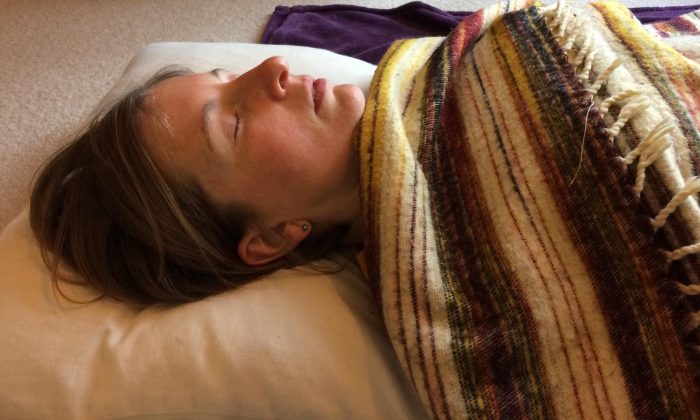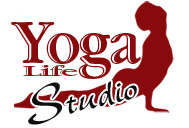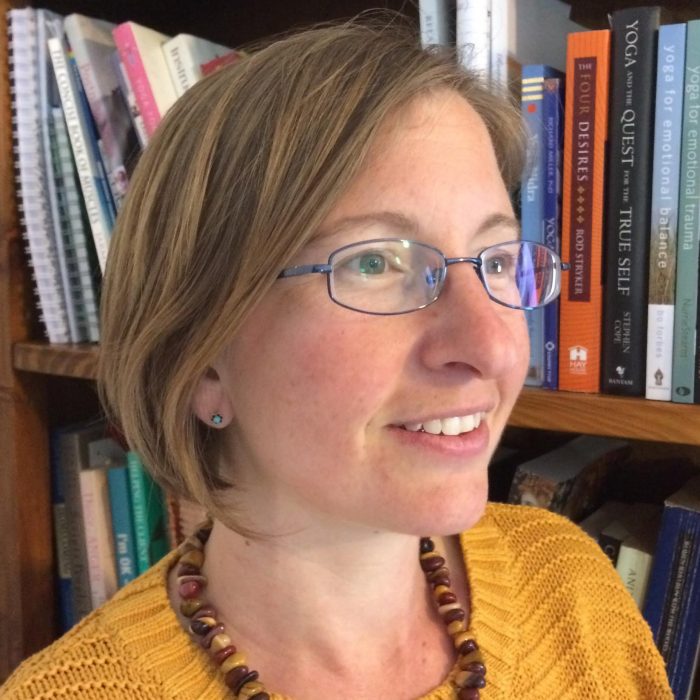Can you tell us what to expect in your yoga class?
I run weekly Total Relaxation classes on Thursday evenings as well as occasional weekend pop-up classes and workshops. In my classes you should be prepared to be cared for and to leave feeling nourished and re-energised.
I include lots of Yoga Nidra (a form of lying down meditation) and restorative postures (poses supported with props and held for 30 seconds or more) into my classes. It’s all about allowing things to unfold and release so there’s no forcing or pushing.
Essentially, there’s a lot of lying down under blankets – and chocolate!
When did you first realise that you wanted to teach yoga? What was the wow moment if any?
Yoga has helped me to manage long-term depression and anxiety, moving beyond just coping to feeling really good most of the time. It’s such a powerful tool that I wanted to share it with as many people as I could.
Exercise in the form of asana practice can be hugely beneficial for mental health but for me it was the deep connection with both body and emotions that arose through the practice of stillness and relaxation that has been transformational.
Where is your favourite place to practice?
I love practicing outside – near the ocean, in the woods, by a river. I enjoy feeling connected to nature in all her wild glory and to feel part of the natural cycles. I love to incorporate these elemental experiences into the Yoga Nidra practices I share in my classes too.
Any advice for new students?
Try lots of classes to find the right class and teacher for you. Look for someone who makes you feel safe and a yoga practice that feels good. Pay attention to what your body and mind need as this can change over time or even from week to week. Sometimes you might feel full of energy and a vinyasa flow class might be just the ticket, but at other times you might feel depleted and a more restful class could be the most beneficial thing for you.
You love yoga because…
It is a practice as diverse as the people of the world. There’s a yoga practice that can benefit anyone whatever their age, level of fitness or flexibility, health, state of mind or interest in spirituality.
For example, Yoga Nidra can be practiced in hospital to help with pain management and pranayama (breathing techniques) to reduce anxiety or depression can be practiced on the bus. Once you have learned the techniques you can take your practice with you everywhere.
What is your favourite yoga posture or practice and why?
Yoga Nidra is my personal favourite and I practice at least once a day.
At its most basic it is guided relaxation and a deeply enjoyable and self-nourishing thing to do.
When practiced regularly it can alleviate a wide range of problems including stress, insomnia, mental health problems, chronic pain, digestive health issues, migraines… the list goes on.
At its most potent it can be used as a powerful tool to work through past trauma including PTSD and to overcome life limiting behavioural patterns and addiction.
And as well as all of that it can also increase our capacity to learn and be creative as it journeys through dreaming and deep sleep states when our minds file away information and get creative. Like when you wake up with the solution to a problem you were struggling with all day…
Can you share 3 interesting facts about yourself?
– I’m currently studying and practicing womb yoga – a form of yoga that supports women through all stages and transitions of life and respects the natural cycles of the body.
– I used to have dredlocks that reached my waist
– In my spare time I’m an accountant
What is your personal motto or favourite quote?
“May I have the courage today
To live the life that I would love,
To postpone my dream no longer
But to do at last what I came here for
And waste my heart on fear no more.”
Excerpt from: A Morning Offering by John O’Donohue
Anything else?
Find something – whether it’s yoga, gardening, painting or wild swimming – something that connects you to your heart. Wait and listen, welcome in the intuition that lives there and then live by it.



